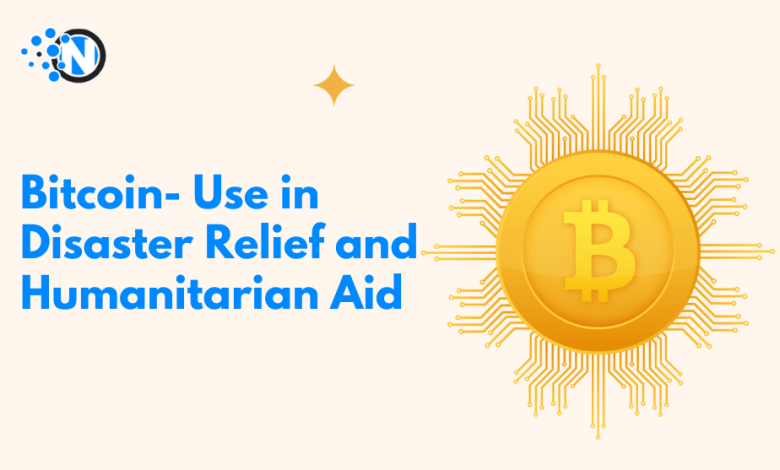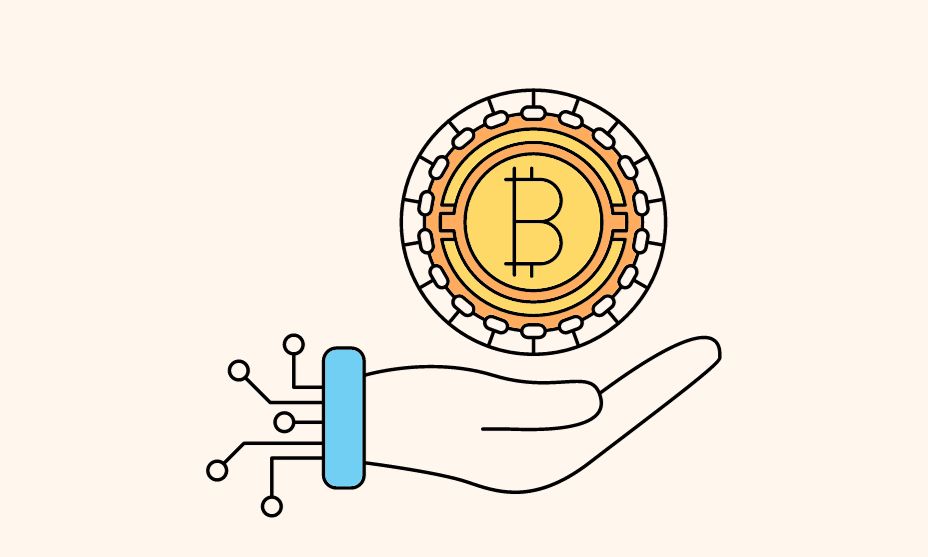Use in Disaster Relief and Humanitarian Aid- Bitcoin

In recent years, the world has seen an increasing severity of natural disasters and charitable crises. As these events overwhelm communities and strain resources, innovative solutions are required to improve the efficiency and effectiveness of disaster relief and charitable aid efforts. One emerging technology that has shown promise in this situation is Bitcoin, a decentralized digital currency built on blockchain technology. In the financial realm, platforms like Altrix Edge site, an online trading platform, have capitalized on the potential of this digital currency.
However, Bitcoin’s unique attributes and capabilities extend beyond finance, leading to explorations of its potential role in disaster relief and humanitarian aid. This article delves into the ways Bitcoin can contribute to these critical efforts and discusses the challenges and opportunities that lie ahead.
Bitcoin’s Attributes for Disaster Relief
Bitcoin possesses several attributes that make it potentially useful in disaster relief and humanitarian aid scenarios:
- Decentralization and Accessibility: Bitcoin operates on a decentralized network, allowing for transactions to occur without the need for intermediaries. This feature can prove invaluable in regions where traditional financial infrastructure has been disrupted by a disaster, enabling aid to reach affected populations directly.
- Rapid and Borderless Transactions: Bitcoin transactions are near-instantaneous and can be conducted across borders without the need for currency conversion. This speed and global accessibility can facilitate the quick transfer of funds to disaster-stricken areas, helping organizations respond promptly to emergent needs.
- Transparency and Accountability: Bitcoin transactions are meticulously logged on a publicly accessible blockchain. This provides an unparalleled level of transparency and allows for the precise tracking of funds. Such a characteristic can significantly bolster accountability when it comes to distributing aid, thereby decreasing the potential for both corruption and mismanagement.
- Microtransactions and Donations: Bitcoin’s ability to facilitate microtransactions empowers individuals to donate modest amounts of cryptocurrency straight to humanitarian relief initiatives. This function can democratize charitable giving, opening the door for a wider spectrum of donors to participate.
Applications in Disaster Relief and Humanitarian Aid
- Emergency Funding and Fundraising: Bitcoin can serve as a tool for rapid fundraising during emergencies. Aid organizations can create Bitcoin wallets to receive donations from around the world, enabling them to quickly gather resources to respond to crises.
- Cross-Border Aid Distribution: In areas with limited or disrupted banking infrastructure, Bitcoin can facilitate cross-border aid distribution by enabling recipients to access funds digitally. This can expedite the delivery of aid to those in need, particularly in hard-to-reach or conflict-ridden areas.
- Transparent Resource Tracking: Bitcoin’s blockchain technology allows for transparent tracking of donations and resource allocation. Donors can verify how their contributions are being used, fostering trust and increasing donor confidence.
- Financial Inclusion: Bitcoin can provide financial services to underserved populations, allowing them to store value and access resources in times of crisis. This can empower vulnerable communities and enhance their resilience.

Challenges and Considerations
While Bitcoin holds potential in disaster relief and humanitarian aid, there are several challenges that must be addressed:
- Volatility: Bitcoin’s value can be highly volatile, which poses risks for both donors and recipients. Strategies to mitigate this risk, such as immediate conversion to local currencies, must be developed.
- Technical Literacy: Effective use of Bitcoin requires a certain level of technical literacy, which may be lacking in disaster-stricken areas. Education and support initiatives are necessary to ensure proper use and adoption.
- Regulatory Hurdles: The regulatory landscape surrounding cryptocurrencies varies widely across countries. Navigating these regulations and ensuring compliance can be complex.
- Energy Consumption: Bitcoin mining, the process by which new coins are created and transactions are validated, requires significant energy. In disaster scenarios, energy resources may be limited, making Bitcoin’s energy consumption a concern.
Read Also: The Pioneer of Cryptocurrency: Bitcoin
Financial Inclusion
In disaster-stricken areas, access to traditional banking services can be disrupted or limited. Many people affected by crises do not have bank accounts or access to financial services. Bitcoin can help bridge this gap by providing a means of storing and transferring value without the need for a bank account.
Using Bitcoin wallets, people can receive and manage funds, making them less dependent on physical cash or traditional banking infrastructure. This financial inclusion is particularly important for people in remote or conflict-affected regions, where traditional financial systems may be non-existent or unreliable.
Furthermore, Bitcoin can be used to provide financial aid to people who are unbanked or underbanked. By simply providing access to a smartphone or computer with an internet connection, they can receive Bitcoin, access local exchanges, and use the digital currency to meet their immediate needs. This flexibility is especially valuable when traditional banking systems are unavailable.
Donations in Cryptocurrency
Donors are increasingly appreciating the idea of giving in cryptocurrency. Bitcoin donations to aid organizations have surged in recent years. Accepting cryptocurrency donations not only expands the funding sources for charitable aid but also taps into the growing community of cryptocurrency fans looking to make a positive impact.
Furthermore, accepting Bitcoin donations can streamline the process of converting funds into local currencies, which can be essential for purchasing supplies and services in disaster affected regions.
Conclusion
Leveraging Bitcoin in disaster relief and humanitarian aid initiatives offers a powerful way to utilize blockchain technology to tackle real-world problems. Despite the existence of certain hurdles, Bitcoin’s unique features, decentralization, accessibility, and transparency, present potential for revolutionizing how aid is distributed and administered during crisis situations. Given the escalating consequences of natural calamities and humanitarian emergencies across the globe, it becomes crucial to delve into pioneering solutions such as Bitcoin. This could set the stage for more effective, accountable, and inclusive responses to humanitarian crises.




